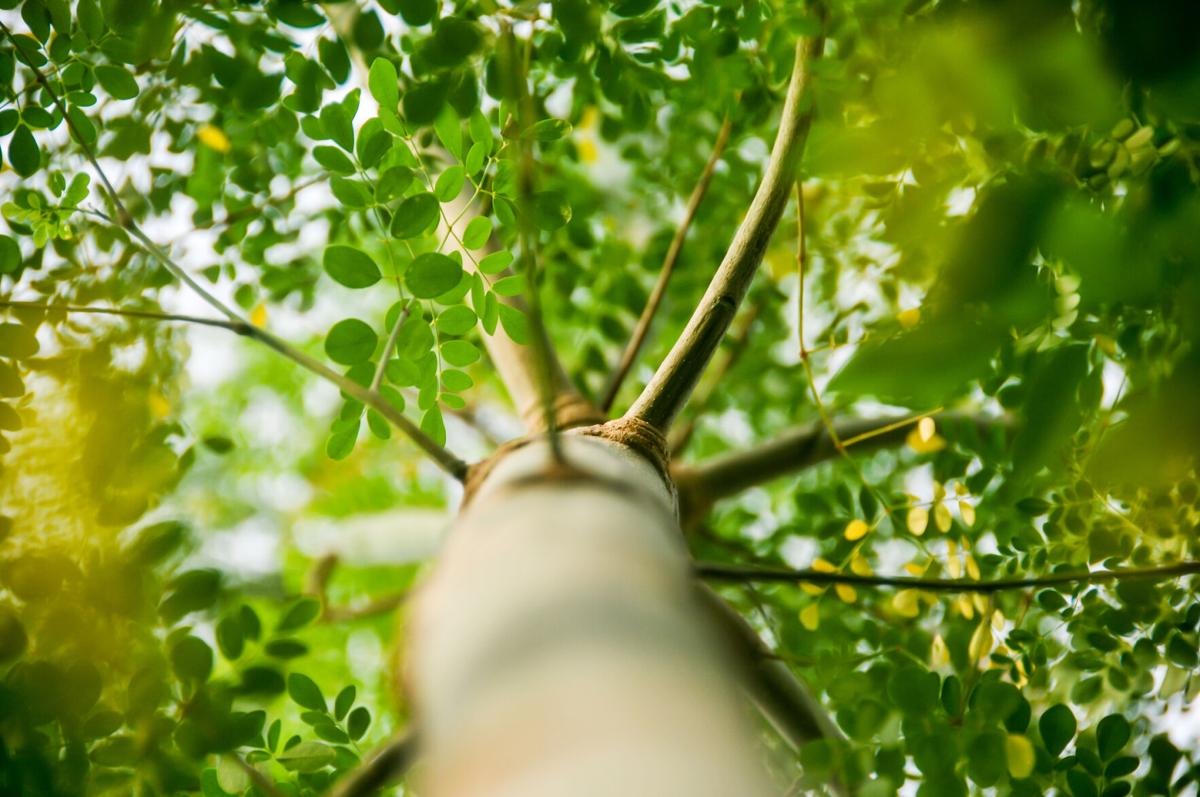The moringa tree (Moringa oleifera) has so many possible uses that it’s hard to keep track. In many parts of the world it’s referred to as the Miracle Tree, as it provides subsistence communities with nearly everything they need. It is thought that humans have cultivated this tree for over 4,000 years.
This native of India is a tropical tree, but does well in Tucson as it is quite drought-tolerant. Its foliage will die back during our winters, but trimming it off in the spring (after the last frost) will ensure the branches and leaves grow back. It’s an incredibly fast grower, and can reach over 20 feet in a single growing season.
Every part of the tree is edible, although people most often harvest and cook the leaves. These can also be dried to make tea. The seed pods, roots and flowers are also edible; seeds can have a laxative effect in some, so use sparingly at first.
According to the University of Arizona’s Campus Arboretum, the leaves are incredibly nutritious, containing “seven times the vitamin C of oranges, four times the calcium in milk, four times the vitamin A in carrots, three times the potassium in bananas, and two times the protein in milk.” The moringa tree’s leaves and seeds are also full of potent antioxidants like beta carotene and quercetin. The flowers are a creamy white, and turn into leguminous pods which can be harvested and eaten or used for planting the next generation of trees.
Oil derived from pressing the seeds can be used for cooking and in cosmetics; it also acts as a lubricant and can even be added to contaminated water to coagulate the particles and clarify the water. In India it’s also used as a base for perfumes.
As you would expect, the moringa has many medicinal uses as well. Traditionally, it’s been used as an anti-inflammatory medicine and to lower blood sugar in diabetes. Scientists are studying its effectiveness in cancer, arthritis, memory problems and other conditions. In addition, the wood can be used for firewood, and the sap provides a bluish dye.
The tree needs warm temperatures and extra water to become established. It needs well-draining soil and sun, but I have found that full Arizona sun tends to be a bit much for it. However, most sources say that full sun is fine even in our climate. It should be planted in open soil, as it does not tolerate containers, due to its long taproot. It’s best to plant it from seed directly into the spot where it will grow, as seedlings don’t transplant well.
If you are looking to harvest the leaves for eating and are planning to buy a tree, avoid plants that have been pruned into tree form — you want a shrubby multi-stemmed plant. During winter, the foliage will die, but it will regenerate quickly once the soil warms up. Since the plant grows so quickly, you can cut it back each year and still have plenty of foliage to harvest by summer. Make sure to mulch it deeply to protect the roots during winter. As an alternative, you can re-sow the seeds each year as you would with an annual food crop.
You can find the trees at some local nurseries, or you can check out local Tucson grower and seed supplier, Moringa Tree Of Life. Different cultivars are grown for either their seeds or their leaves so check what type of seed you would prefer.





